#oceanproducts
Text
0 notes
Video
instagram
Вино и морепродукты @win_chester_tmn #вино #тюмень #видеооператор #видеосъемкатюмень #oceanproduction (at Ресторан Винчестер - Тюмень) https://www.instagram.com/p/ByNPUoslUMO/?igshid=v4nb8j163ga0
1 note
·
View note
Photo
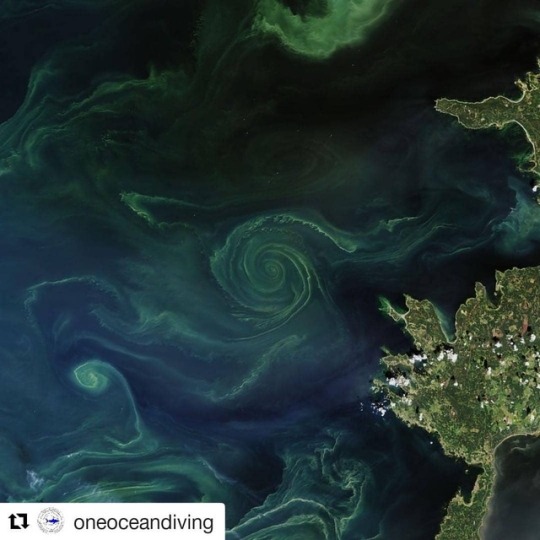
Very interesting... #Repost @oneoceandiving (@get_repost) ・・・ Sharks help us breathe. While rain forests are responsible for about 1/3 (28%) of the oxygen that we breathe, most of the Earth’s oxygen (70%) is produced by marine plants. Phytoplankton (microscopic marine plants that are so abundant they can be seem from space!) produce oxygen as a byproduct of photosynthesis. These algae form the base of the food chain for all of life in the ocean, which could make it the most important organism on earth. Polluted, warming waters (caused by runoff from land and C02 emissions) decrease phytoplankton production. However, historical overfishing causes far greater ecological consequences than any other human disturbance (Jackson et al. 2001). Meaning, the removal of top predators (such as sharks) can cause a phase-shift in the ocean’s ecosystem resulting in the disappearance of entire trophic levels (like the oxygen-producing phytoplankton). But hey, who needs to breathe anyway? #kindofabigdeal #itsallconnected #justbreathe #seafoodwatch #planetearth #oceanproduction #carboncycle #apexpredators #trophiclevels #bottomofthefoodchain #underappreciated #phytoplankton #algaearecool #savethereef #saveourseas #saveoursharks #oceanconservation #marinebiology ************************************** Post by intern @brittanyrvzoo Photo of phytoplankton bloom by @nasa https://www.instagram.com/p/Bw6Mj-2F8O4/?utm_source=ig_tumblr_share&igshid=bde1uhit9zzg
#repost#kindofabigdeal#itsallconnected#justbreathe#seafoodwatch#planetearth#oceanproduction#carboncycle#apexpredators#trophiclevels#bottomofthefoodchain#underappreciated#phytoplankton#algaearecool#savethereef#saveourseas#saveoursharks#oceanconservation#marinebiology
0 notes
Photo

Sharks help us breathe. While rain forests are responsible for about 1/3 (28%) of the oxygen that we breathe, most of the Earth’s oxygen (70%) is produced by marine plants. Phytoplankton (microscopic marine plants that are so abundant they can be seem from space!) produce oxygen as a byproduct of photosynthesis. These algae form the base of the food chain for all of life in the ocean, which could make it the most important organism on earth. Polluted, warming waters (caused by runoff from land and C02 emissions) decrease phytoplankton production. However, historical overfishing causes far greater ecological consequences than any other human disturbance (Jackson et al. 2001). Meaning, the removal of top predators (such as sharks) can cause a phase-shift in the ocean’s ecosystem resulting in the disappearance of entire trophic levels (like the oxygen-producing phytoplankton). But hey, who needs to breathe anyway? #kindofabigdeal #itsallconnected #justbreathe #seafoodwatch #planetearth #oceanproduction #carboncycle #apexpredators #trophiclevels #bottomofthefoodchain #underappreciated #phytoplankton #algaearecool #savethereef #saveourseas #saveoursharks #oceanconservation #marinebiology ************************************** Post by intern @brittanyrvzoo Photo of phytoplankton bloom by @nasa (at Haleiwa, Hawaii) https://www.instagram.com/p/Bw5UcM2BKNI/?utm_source=ig_tumblr_share&igshid=1xc2t07bc1r9f
#kindofabigdeal#itsallconnected#justbreathe#seafoodwatch#planetearth#oceanproduction#carboncycle#apexpredators#trophiclevels#bottomofthefoodchain#underappreciated#phytoplankton#algaearecool#savethereef#saveourseas#saveoursharks#oceanconservation#marinebiology
0 notes
Photo
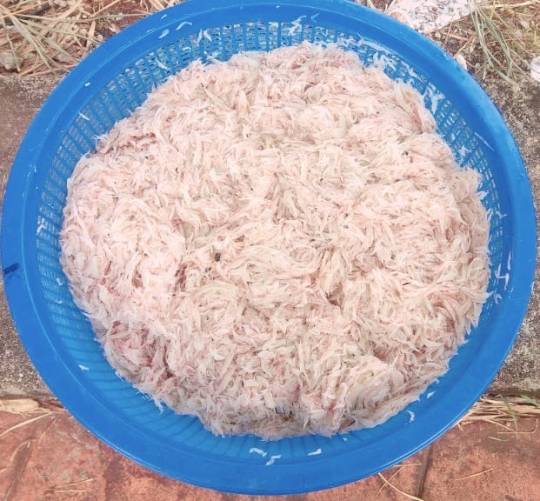
These small shrimps or bubuk by the local had found here in Kampung Telaga Air. However, the most popular bubuk in Sarawak is none other than Bintulu and Miri due to it's taste their natural more reddish in colour. The traditional products such as shrimp paste or belacan and cencaluk are made from these small shrimps. #oceanproducts #smallshrimp #shrimps #TelagaAir #Kuching #travel (at Telagair)
0 notes
Photo
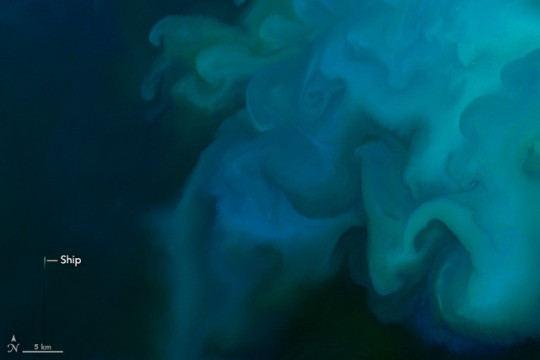
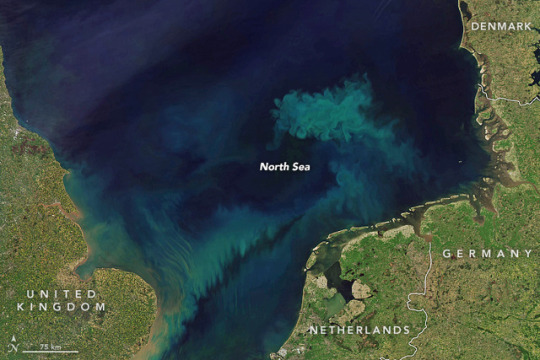
From NASA Earth Observatory Image of the Day; May 8, 2018:
Spring Color in the North Sea
The increasing sunlight and warmth of springtime provoke buds and blooms amidst the trees, flowers, and grasses on land. Warm air and sunlight also beget warmer ocean waters and provoke blooms of the “grass of the sea”—phytoplankton. These tiny, plant-like organisms float near the ocean surface and turn sunlight and carbon dioxide into sugars and oxygen. In turn, they become food for the grazing zooplankton, shellfish, and finfish of the sea.
On May 5, 2018, the Operational Land Imager (OLI) on Landsat 8 acquired a natural-color image (top) of a phytoplankton bloom in the North Sea. The next day, the Moderate Resolution Imaging Spectroradiometer (MODIS) instrument on NASA’s Aqua satellite observed the same bloom in a wider context. Five days earlier, MODIS detected visible plumes of sediment moving through the area to the west.
The milkier, lighter-colored waters are probably filled with coccolithophores, while greener areas may be diatoms. (It is impossible to know for sure without direct water samples.) The brightness of the color may reflect the density of the phytoplankton, while the various swirls and shapes trace the intricate movements of currents, eddies, and tides.
Phytoplankton are most abundant in the North Sea in late spring and early summer due to high levels of nutrients in the water. Melting sea ice and increased runoff from European rivers—a product of melting snow and spring rains—carry a heavy load of nutrients out to sea, while also freshening the surface waters. Intense seasonal winds blowing over the relatively shallow sea also cause a lot of mixing that brings nutrients to the surface.
In a study published in August 2017, a research team from the United Kingdom found that primary production in the North Sea has declined since the late 1980s. The causes for less phytoplankton abundance are not entirely clear, but they appear to be related to decreased nutrients—thanks to less runoff from European farms and cities—increasing sea temperatures, and changing light levels. Whatever the cause, the decrease in primary production has coincided with a decrease in zooplankton and some higher forms of marine life that consume phytoplankton. At the same time, many fish stocks remained stable, probably due to better fisheries management amid the changing ocean conditions.
Related Reading
Capuzzo, E. et al. (2017) A decline in primary production in the North Sea over 25 years, associated with reductions in zooplankton abundance and fish stock recruitment. Global Change Biology.
NASA Earth Observatory (2010, July 13) What are Phytoplankton?
NASA Earth Observatory (2011, February 17) As the Seasons Change, Will the Plankton?
Scientific American (2010, April 14) What Causes the North Atlantic Plankton Bloom? Accessed May 7, 2018.
UK Department of Trade and Industry (2001, August) Technical Report: An Overview of Plankton Ecology in the North Sea.Accessed May 7, 2018.
NASA Earth Observatory images by Joshua Stevens, using Landsat data from the U.S. Geological Survey and MODIS data from LANCE/EOSDIS Rapid Response. Story by Mike Carlowicz. Instrument(s): Landsat 8 - OLI; Aqua - MODIS
#earth observatory#satellite photo#long post#plankton bloom#phytoplankton#plants#coccolithophore#diatom#plankton#runoff#North Sea#landsat 8#aqua satellite
9 notes
·
View notes
Photo
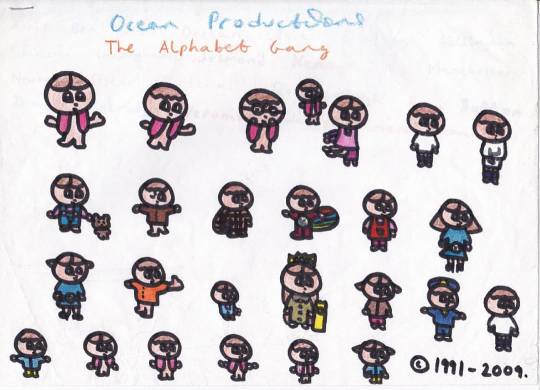
The Alphabet Gang (2009) #creativework #year2009 #2009 #oceanproductions #thealphabetgang #alphabetgang #alphabet #abc (at London, United Kingdom)
0 notes
Photo

Repost @oceanproduct by @media.repost: Икры много не бывает! Для заказа #9459090 #океанпродукт #oceanproduct #трепангнамеду #икракраснодар #креветки #морепродукты #краснодар #краснодарскийкрай #здоровье #зож #пп #спорт #рыба #краснаяикра #ялюблюсвоюработу #krasnodar #krd #гмр #кмр #чмр #цмр #фмр #mamakrd #юмр #старокорсунская #озмолл #пашковка #гребешок #краб
#mamakrd#краб#краснаяикра#krasnodar#морепродукты#кмр#креветки#здоровье#гребешок#икракраснодар#пашковка#трепангнамеду#краснодар#цмр#пп#озмолл#краснодарскийкрай#чмр#юмр#старокорсунская#krd#зож#ялюблюсвоюработу#9459090#гмр#фмр#океанпродукт#рыба#спорт#oceanproduct
0 notes
Photo

Annstrology 🌛💜🍀✨♊️⭐️🍎
#oceanpotion#oceanlover#oceanproducts#astrology#love#valentine#swan#aphrodite#downtoearthproducts#pisces#thisishowitallstarts#majic#apples#seasalt#herblove
1 note
·
View note
Video
instagram
Уральский форум маркетинга #oceanproduction #видеосъемкатюмень #маркетинг #инстаграм #тюмень (at Тюменский ТЕХНОПАРК) https://www.instagram.com/p/BxhgymEitOx/?igshid=1x0lxagvock2j
1 note
·
View note
Video
instagram
Всем спорт @athletic72 #тренировка #атлетикджим #спорт #oceanproduction #тюмень (at Tyumen) https://www.instagram.com/p/BwJz6LAAdoE/?utm_source=ig_tumblr_share&igshid=1fg2umlxr873l
1 note
·
View note
Video
instagram
Иван дело говорит, на улке уже плюсы, надо готовить пресс #пп #зож #упражнения #фитнес #спорт #тюмень #времяеды #oceanproduction #oceanpro #видеосъемкатюмень #видео #видеосъёмка #видеографтюмень #видеооператор #пресс #упражнения #наспорте (at Цветной бульвар в Тюмени) https://www.instagram.com/p/Bu-sbFul1y1/?utm_source=ig_tumblr_share&igshid=xooyzkfp2ha
#пп#зож#упражнения#фитнес#спорт#тюмень#времяеды#oceanproduction#oceanpro#видеосъемкатюмень#видео#видеосъёмка#видеографтюмень#видеооператор#пресс#наспорте
1 note
·
View note
Video
instagram
Долой бургер диету и пиво это не работает я проверял 😂 #пп #зож #упражнения #фитнес #спорт #тюмень #времяеды #oceanproduction #oceanpro #видеосъемкатюмень #видео #видеосъёмка #видеографтюмень #видеооператор (at Tyumen) https://www.instagram.com/p/Bth4FFFFJ8q/?utm_source=ig_tumblr_share&igshid=1ldd3snz8on90
#пп#зож#упражнения#фитнес#спорт#тюмень#времяеды#oceanproduction#oceanpro#видеосъемкатюмень#видео#видеосъёмка#видеографтюмень#видеооператор
1 note
·
View note
Photo

Съёмка на крутом показе, день рождения 🎂💥 @happykids.tmn камера @sors72 #oceanproduction (at Бизнес-центр Парус) https://www.instagram.com/p/B6iiYhDiDYq/?igshid=1qat47tdmuokb
0 notes
Photo

Было лето, но мало #nusapenida #bali #oceanproduction (at Seminyak, Bali) https://www.instagram.com/p/B2yRwski3Ie/?igshid=17r5d3282nv7v
0 notes
Photo

#tanahlot #bali #oceanproduction (at Pura Tanahlot Bali Indonesia) https://www.instagram.com/p/B1gYfc_j9yV/?igshid=avg6572ghv51
0 notes